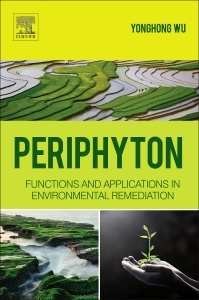Periphyton Functions and Application in Environmental Remediation
Auteur : Wu Yonghong

Periphyton: Functions and Application in Environmental Remediation presents a systematic overview of a wide variety of periphyton functions and applications in environmental remediation, providing readers with an understanding of the biological/ecological features of periphyton, the methodology of their study, and their application in environmental conservation.
With increases in environmental stress, anthropogenic impacts, and the global decline in biodiversity, there is a pressing need for methods to assess and improve environmental quality that are rapid, reliable, and cost-effective. Periphyton is an important component of benthic communities and plays a crucial role in the functioning of microbial food webs. Because of a number of advantages, such as a short lifecycle, relative immobility, more rapid responses to environmental stress and anthropogenic impact than any metazoa, ease of sampling, availability of taxonomic/molecular identification, and standardized methodologies for temporal/spatial comparisons, there has, in recent decades, been an increased interest in periphyton as a tool in biological conservation in aquatic ecosystems.
1. Periphyton and its study methods2. The living environment of periphyton3. Indicators for Monitoring Aquatic Ecosystem4. Water and wastewater purification using periphyton5. Periphytic biofilm and its functions in aquatic nutrient cycling6. Periphyton functions in adjusting P sinks in sediments7. The evaluation of phosphorus removal processes and mechanisms from surface water by periphyton8. Periphyton: an interface between sediments and overlying water9. Periphyton: A promising bio-organic fertilizer source in agricultural ecosystems10. The removal of heavy metals by an immobilized periphyton multi-level bioreactor11. Photobioreactor-wetland system removes organic pollutants and nutrients12. Hybrid bioreactor based on periphyton: The removal of nutrients from non-point source wastewater13. Investigation of adsorption and absorption mechanisms during copper (II) removal by periphyton14. Simultaneous removal of Cu and Cd from soil and water in paddy fields by native periphyton15. The removal of COD by a spiral periphyton bioreactor (SPR) and its associated microbial community16. The removal of methyl orange by periphytic biofilms: Equilibrium and kinetic modelling
- Presents case studies that help readers implement similar ecological designs
- Focuses on the function of periphyton in remediating destructed ecosystems
- Provides readers with an understanding of periphyton in practice, especially the value of periphyton in enhancing environmental and ecosystem qualities
- Discusses the role of periphyton in purifying water and its effect on abiotic elements
Date de parution : 09-2016
Ouvrage de 434 p.
15x22.8 cm



